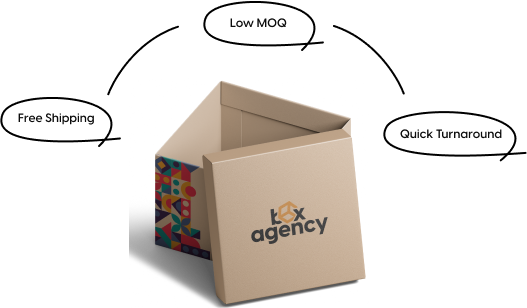Compostable Food Packaging That Returns to Nature
Compostable food packaging stands out as a game-changing solution in a world facing the issue of plastic pollution. This is made using environmentally friendly materials such as sugarcane. This innovative and biodegradable packaging keeps our food safe and nourishes the soil.
This article will examine the numerous benefits of compostable packaging, its various types, and their environmental impact. You will be equipped to make smart decisions for a cleaner and greener tomorrow.
What is Compostable Packaging?
Compostable food packaging refers to a type of environmentally friendly packaging that is made from natural materials such as sugar cane and corn starch. This packaging is biodegradable quickly within weeks in the right composting conditions unlike regular petroleum-based plastic.
A sugar cane container starts with growing sugar cane which is later processed into a biodegradable material. The container can be composted with other organic waste by the consumer once it is no longer useful. Choosing compostable food packaging lessens the effect of plastic waste but also improves the soil quality where it is composted.
What Is The Difference Between Compostable And Biodegradable Food Packaging?
| Aspect | Compostable | Biodegradable |
| Breakdown | Turns into compost in specific conditions | Breaks down into natural elements over time |
| Time | 90–180 days | Weeks to years |
| Conditions | Needs industrial composting | Degrades in natural environments |
| End Product | Nutrient-rich compost | Water, biomass (may leave residue) |
| Certifications | Often certified | Not always certified |
| Eco-Friendliness | Very environmentally friendly if properly composted | Depends on material; may produce microplastics |
| Disposal | Compost bin or facility | Landfill or sometimes recyclable materials |
The Lifecycle of Compostable Food Packaging
Sustainable compostable food packaging operates on a closed-loop system designed to reduce harm to the environment. The process starts with natural materials such as cornstarch and sugarcane waste as well as polylactic acid (PLA), which are used to produce environmentally friendly packaging with minimal dependence on fossil fuels.
The packaging is discarded at composting facilities where it decomposes under controlled conditions of heat, water, and microorganisms after use. The packaging turns into nutrient-rich compost suitable in about 3-6 months for improving soil quality and promoting new plant growth.
How Compostable Packaging Breaks Down in the Environment?
Compostable packaging might notably decrease total plastic waste according to studies. For example, the European Commission’s research suggests that using compostable packaging could potentially avoid approximately 500,000 tons of CO2 emissions per year across the EU.
Evidence in the Journal of Cleaner Production reveals that compostable materials decompose in composting facilities which provide soil with essential nutrients instead of occupying landfill space. Consider exploring the Compostable Packaging Alliance of Ocean Conservancy for more details. They provide comprehensive research and insights into the benefits of opting for compostable alternatives.
Types of Compostable Materials Used in Food Packaging
Not every compostable material works the same way for every use. Some are better than others, which depend on what you need. Here are some commonly used compostable materials along with their advantages and disadvantages to help you pick the right one for your situation.
- Sugar Cane: It breaks down naturally and is affordable, which makes it a good choice for packaging.
- Corn Starch: It is flexible and cheap, but it needs special industrial composting facilities to decompose properly.
- Polylactic Acid: It is often used for food containers, but it does not break down easily in regular home compost.
- Bamboo: It is tough and long-lasting, which makes it great for tools like spoons and chopsticks, but it can be more costly.
- Mushroom Packaging: It is kind to the environment and breaks down easily, but it might not be easy to find in some places.
Each of these materials has its own strengths and weaknesses, so it is important to think about what you really need before deciding.
Plant-Based Materials
Plant-based materials used in compostable packaging come from renewable resources such as cornstarch and bamboo. These materials break down naturally, which helps to reduce plastic waste and lower carbon emissions. They help brands focus on being environmentally friendly and meet industrial composting standards like ASTM D6400. Their increasing use shows a move toward packaging that is practical and safe for the environment.
Sustainable Inks and Adhesives
Sustainable inks and adhesives help keep packaging fully compostable. Soy-based and plant-based inks and natural adhesives break down safely without harmful chemicals, unlike usual options. These materials support clean decomposition and improve the brand image as environmentally responsible. They also allow brands to design packaging that is both stylish and protective while still meeting the compostable requirements of eco conscious customers.
Which Packaging Material Is Best For Eco-Friendliness?
The best eco-friendly packaging materials are those that can be renewed and broken down in compost. Examples include plant-based bioplastics like paper and mushroom-based packaging. These materials help reduce waste in landfills and help create a circular economy. Because they can be composted and break down naturally, and they are great choices for brands that want to lower their environmental impact and meet sustainability goals while satisfying what customers expect.
Benefits of Using Compostable Food Packaging
Compostable and biodegradable packaging offer a better choice in a world full of plastic waste. A local cafe called Green Beans switched to compostable packaging and saw great results. They cut their waste by 60% and had a 30% boost in customer interaction. People liked the cafe’s environmentally friendly efforts and often posted about their good experience on social media. Green Beans worked with suppliers like BioPak for cups and bags, which made sure everything was compostable. This helped improve their brand image and build trust with customers who care about the environment, which shows both real and emotional benefits of their decision.
Reduction of Plastic Waste
Compostable packaging helps to cut down on plastic waste by using materials that are made from plants instead of plastic. Examples include PLA and paperboard. Compostable materials break down faster when the right conditions are met, unlike regular plastic, which can last for hundreds of years in landfills. This change helps to protect the oceans and also reduces microplastics in the environment.
Companies that use compostable packaging are helping to achieve zero-waste goals, which match the customers’ demand. Businesses help to build a circular economy by stopping long-term plastic buildup, and they are encouraging better easy-to-dispose waste that focuses on reuse.
Environmental Impact
Compostable food packaging has a much smaller effect on the environment compared to regular plastic. These materials are made from natural sources which means they use less energy to make and create fewer harmful gases. They turn into safe and natural materials when thrown away, which also improves the soil instead of harming the environment. Compostable packaging eases the pressure on waste systems, unlike plastic, which causes a lot of pollution in the oceans and overflows landfills.
They help to protect nature and cut down on pollution when brands choose compostable options, also showing they care about being sustainable. This shift shows a responsible way to take care of the planet and supports worldwide efforts to fight climate change.
Healthy Packaging Alternatives
Compostable packaging is a better choice than plastic because it does not include harmful ingredients such as toxic additives and dangerous chemical residues. Materials like paper and films are made from cornstarch which is crafted from natural resources and is free from harmful substances such as BPA and heavy metals that are often found in regular plastics.
This makes them safer for food and better for people’s health as well. These choices help the environment and also protect human health, which makes them perfect for brands that focus on organic and healthy food.
Lowering Carbon Footprint
Compostable packaging helps reduce the amount of carbon that is released into the atmosphere by using materials that come from renewable sources and require less energy to make. Materials like bagasse and PLA use fewer fossil fuels and create less pollution during production.
They turn into rich compost when these materials break down, which helps avoid the methane emissions that come from plastic waste in landfills. Using these materials is a clear step towards being responsible for the climate for companies that care about the environment. It helps them reach their goals for reducing carbon emissions and improves the environmental impact of their packaging from making to throwing away.
Avoiding Harmful Chemicals
Compostable food packaging doesn’t contain harmful chemicals that are often found in regular plastic, such as PVC and petroleum-based additives. It instead uses plant-based, non-toxic ingredients that break down safely without creating pollution. This lowers the risk of health problems for people and stops harmful chemicals from getting into food or the environment.
Compostable inks and adhesives also avoid heavy metals and harmful vapors. Using clean, safe materials improves product safety and meets important rules and standards. Brands that choose chemical-free packaging show they are committed to being sustainable which keeps food safe.
What Are The Disadvantages Of Compostable Packaging?
Compostable packaging is meant to be environmentally friendly, but it has some real-world issues. It can only break down properly in special composting plants, which are not common in homes or in landfills. If not handled right, it can end up as regular trash and even release harmful methane gas.
People often do not know how to properly dispose of it, which messes up recycling efforts. Making this type of packaging usually uses crops like corn, which brings up worries about using land and water, and possibly taking away from food supplies. These materials are also usually more costly than regular plastics, making them less accessible.
There is also a lack of clear labels, and the materials do not last as long, which limits how well they work. Even though compostable packaging sounds good for the environment, it has major challenges in terms of the environment and how it is handled, which need to be solved for it to be a real alternative.
Is Compostable Packaging Actually Compostable?
The word compostable makes it sound like something will fully break down into natural stuff, but in reality, it can be a bit of a trick. Most packaging labeled as compostable only breaks down well in special industrial composting places. These places need high heat and lots of microbes, which are not usually found in regular home compost piles or landfills.
If you do not have access to these special composting facilities, the materials stay around in the environment just like regular plastic. This raises questions about how helpful compostable products really are for the environment and if they are truly sustainable.
Do Compostable Bags Release Microplastics?
Compostable bags are made from plant-based materials that are certified, such as PLA or cornstarch. They do not release microplastics when these bags are composted properly in industrial facilities. This is different from some biodegradable plastics, which can break into tiny plastic particles. Compostable bags are made to turn completely into organic material. But if they are thrown away in landfills instead of being composted correctly, they might not break down fully. That is why it is important to compost them properly to prevent harm to the environment.
Where Can I Order Custom Compostable Food Packaging?
You can order custom compostable food packaging from Box Agency, a sustainable packaging supplier that focuses on environmentally friendly and branded solutions. They provide a variety of compostable products like takeout containers and bags, which can all be personalized with your logo and design. Box Agency makes sure its packaging meets certified compostable standards, helping brands lower their environmental impact while keeping the packaging looking good and high quality.




